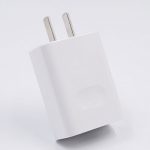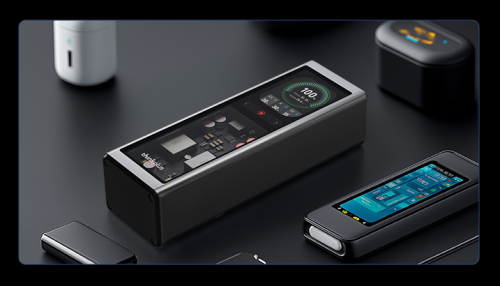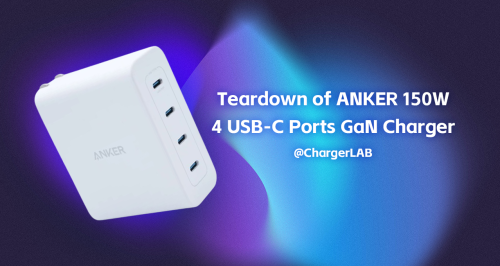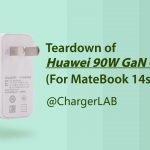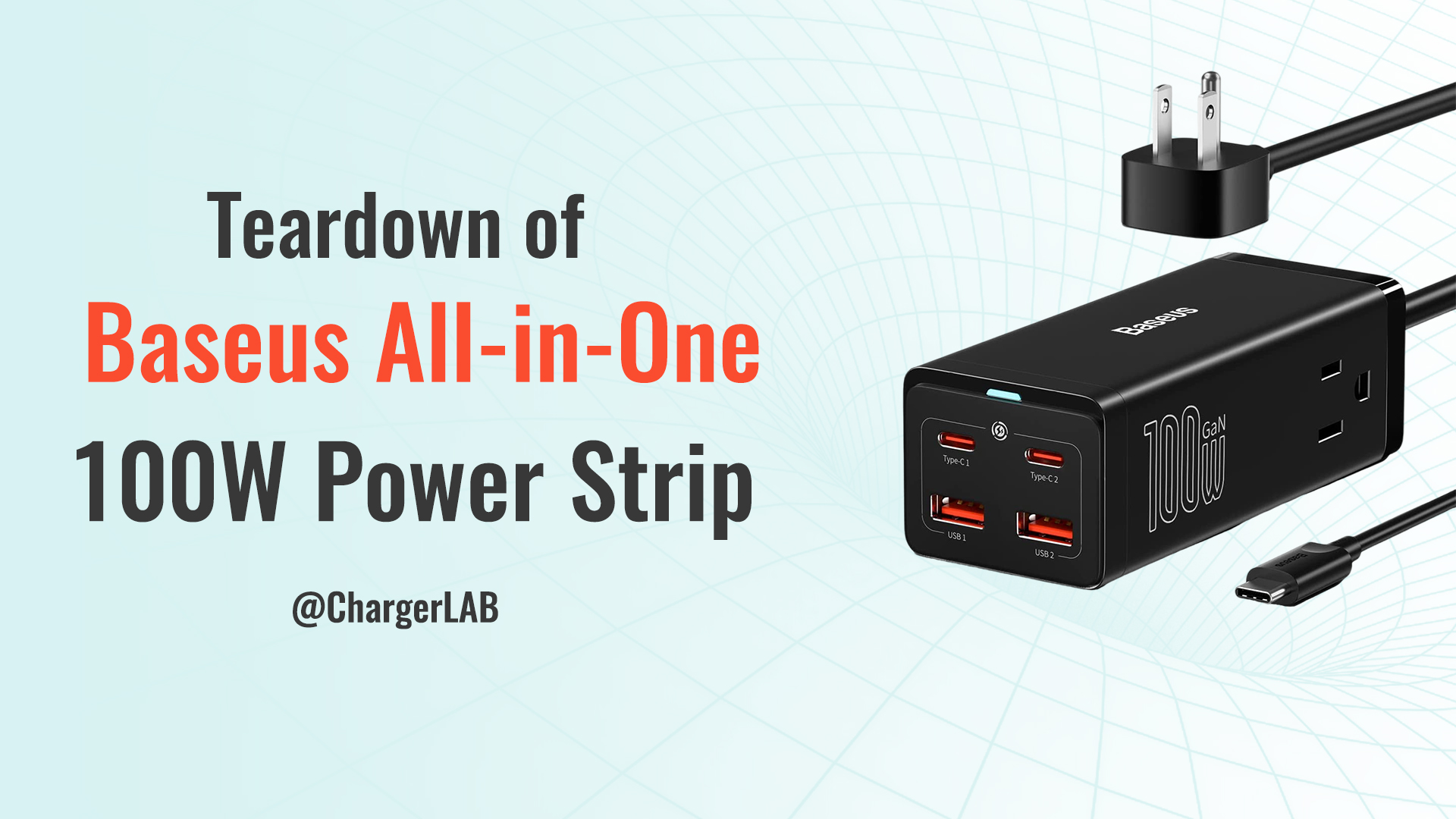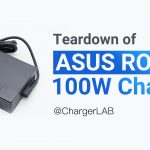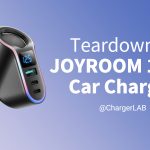The Huawei 20W FCP Charger (HW-100200C00) is a charger that comes with some of the mid-range Huawei and Honor smartphones in 2019. We did a report on it last year and what's special about it is that it is powered by a new technology called charge pump.
Charge pump technology is a high-voltage charging and high-current solution newly developed for high-speed charging. It is a DC-DC converter that uses capacitors as energy storage components for voltage conversion and the conversion efficiency is very high, almost 100%.
I Design
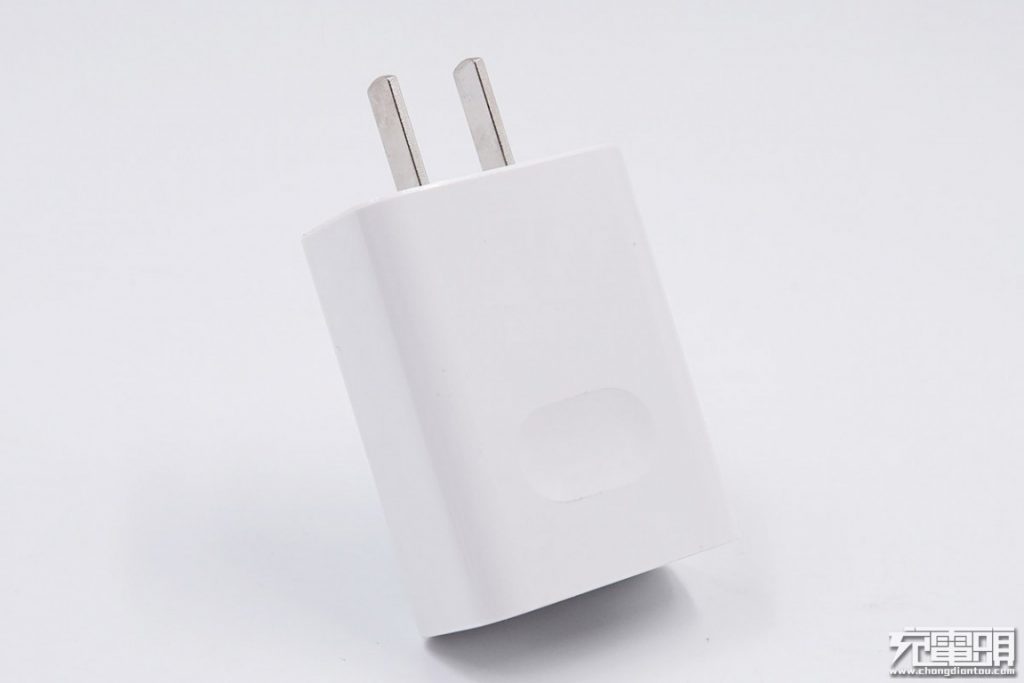
The charger comes with a glossy white finish. The prongs are unfoldable.
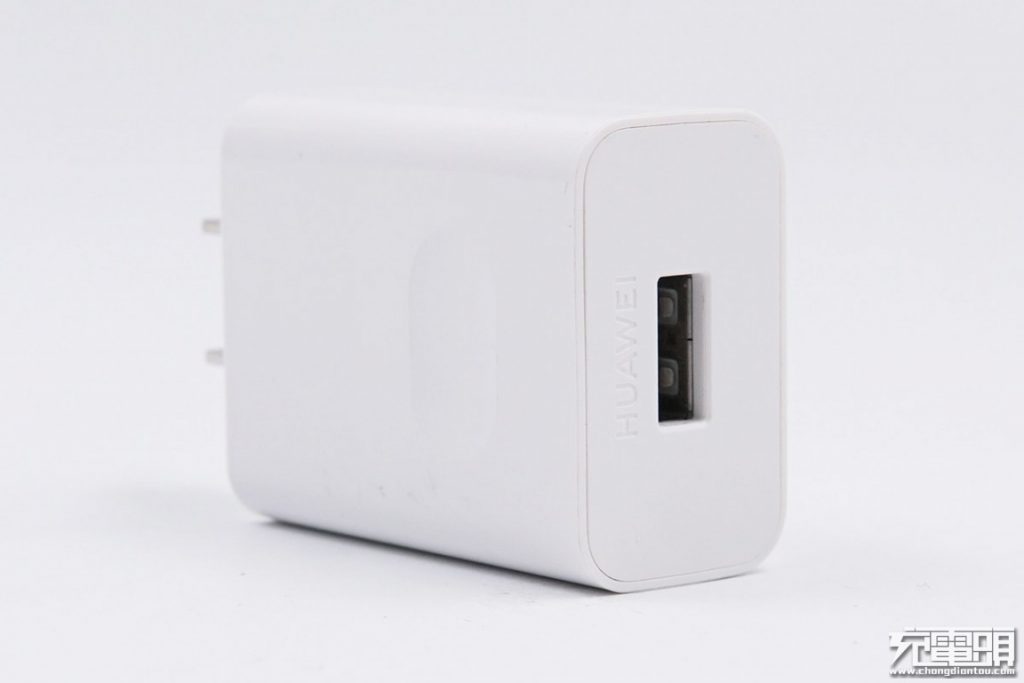
Huawei's signature groove design offers better grip.
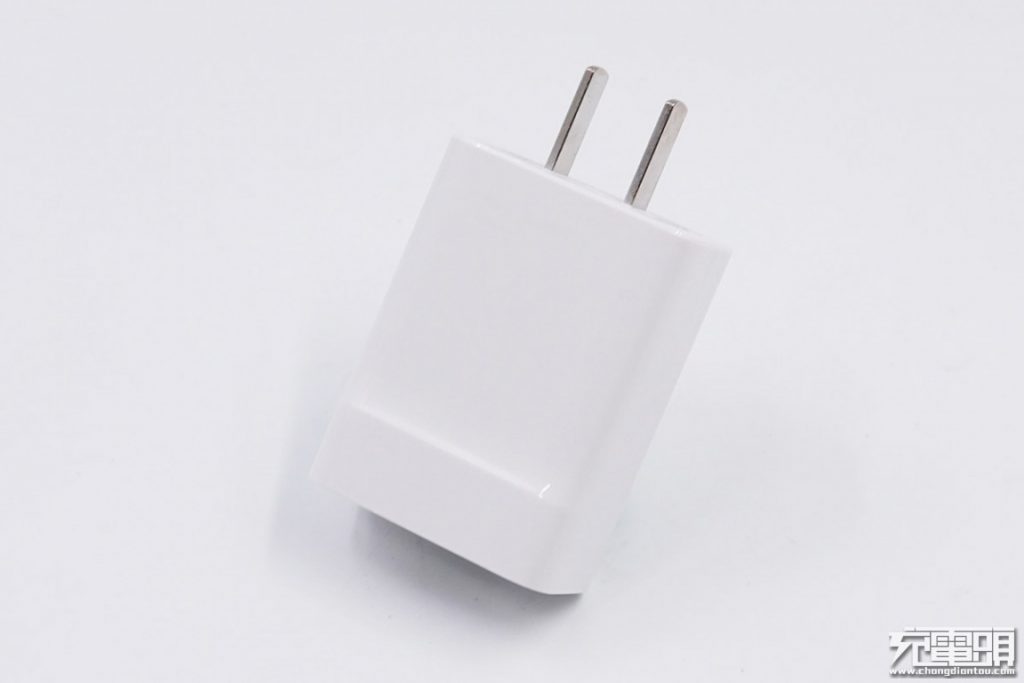
Slightly raised at the bottom.
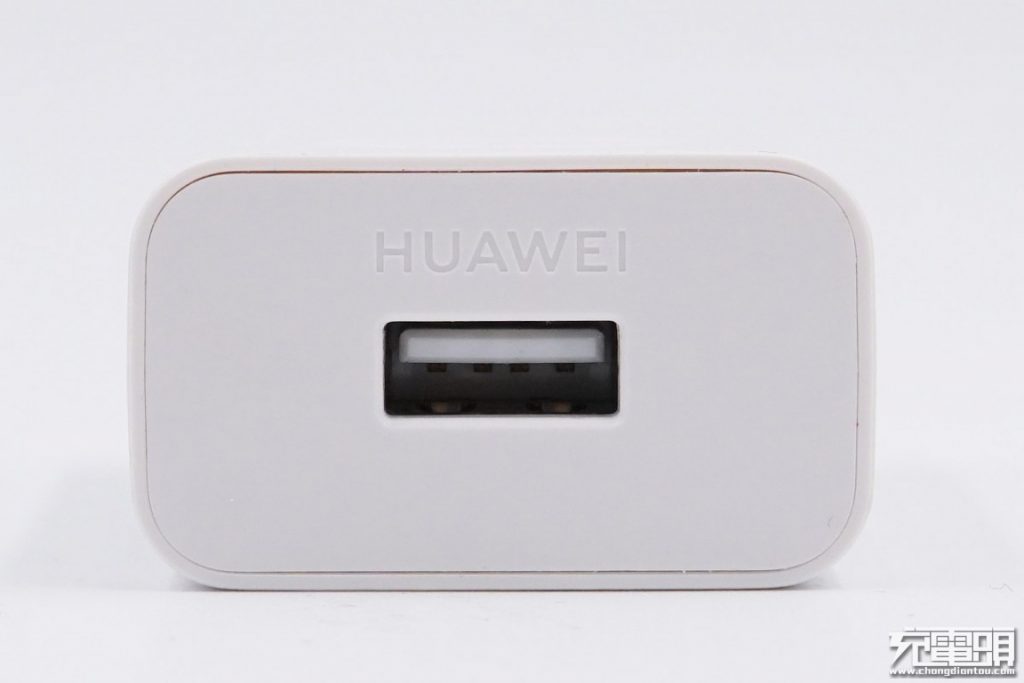
The USB-A port is centered with a white plastic tongue inside.
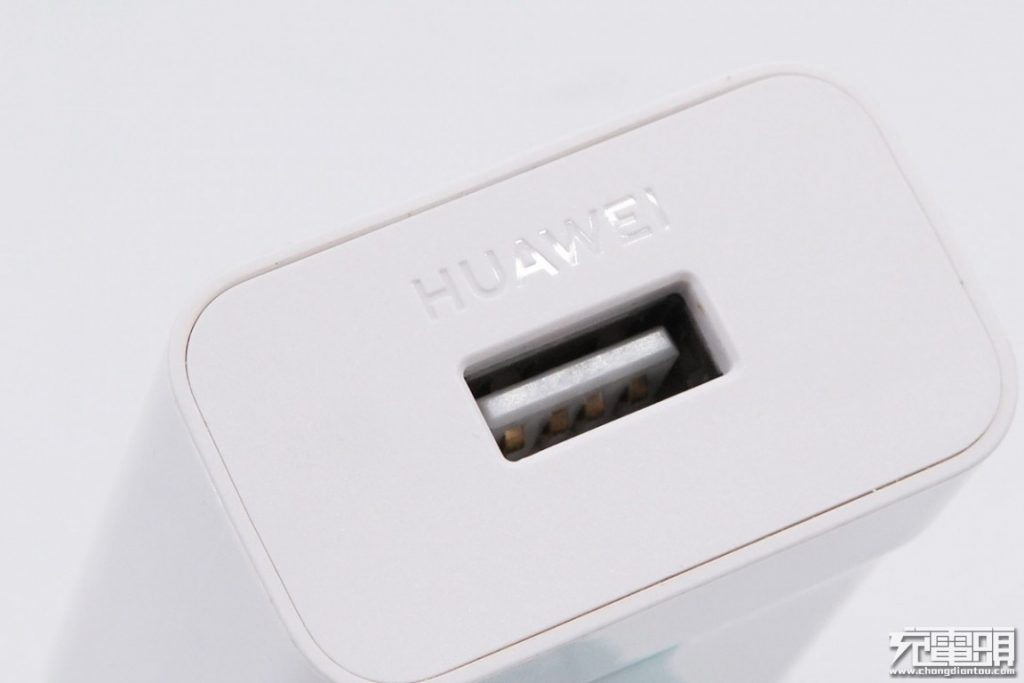
Close-up the USB-A port. We can see the four pins all have normal width (not widened for higher amperes).
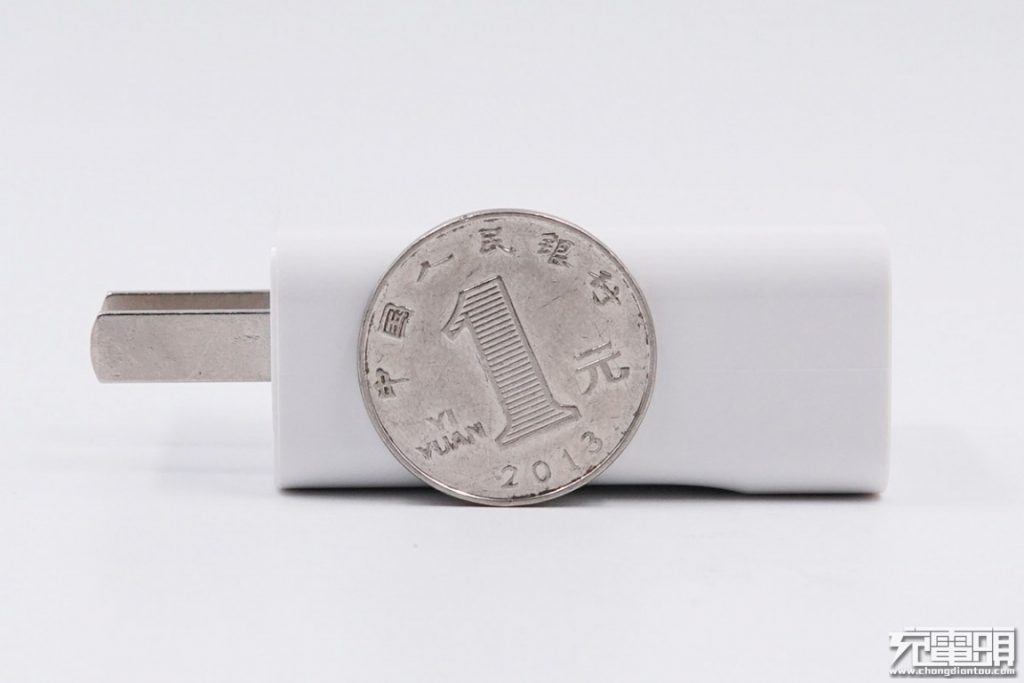
The charger is quite compact.
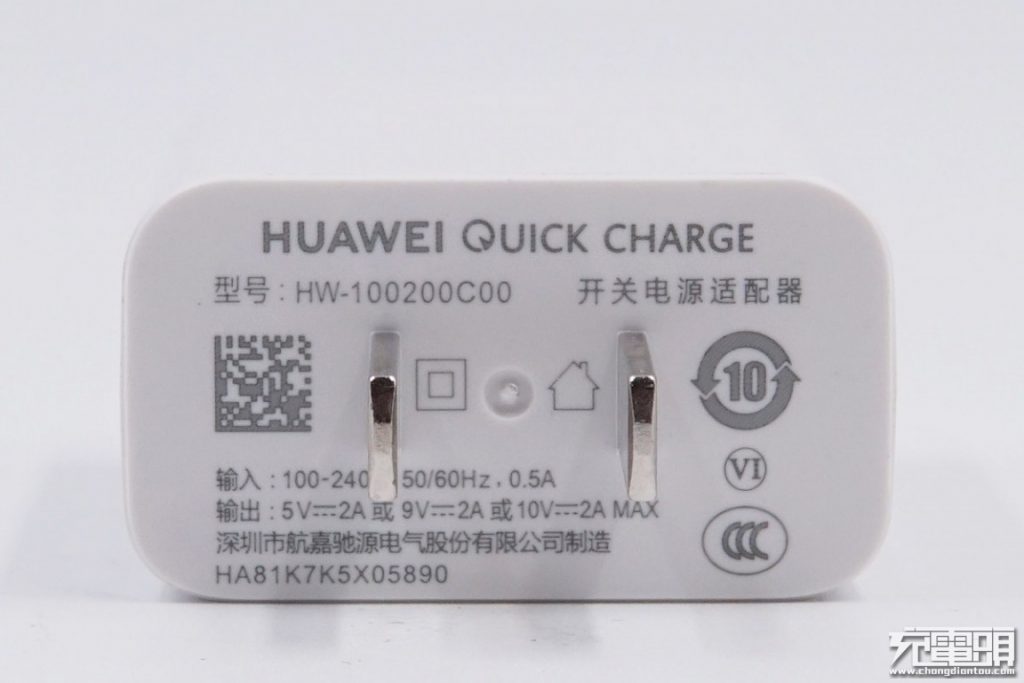
Model: HW-100200C00. Input: 100-240V~ 50/60Hz, 0.5A. Output: 5V/2A, 9V/2A, 10V/2A. It is made by Huntkey (one of the largest power supply manufacturer in China).
II Charging Protocol Test
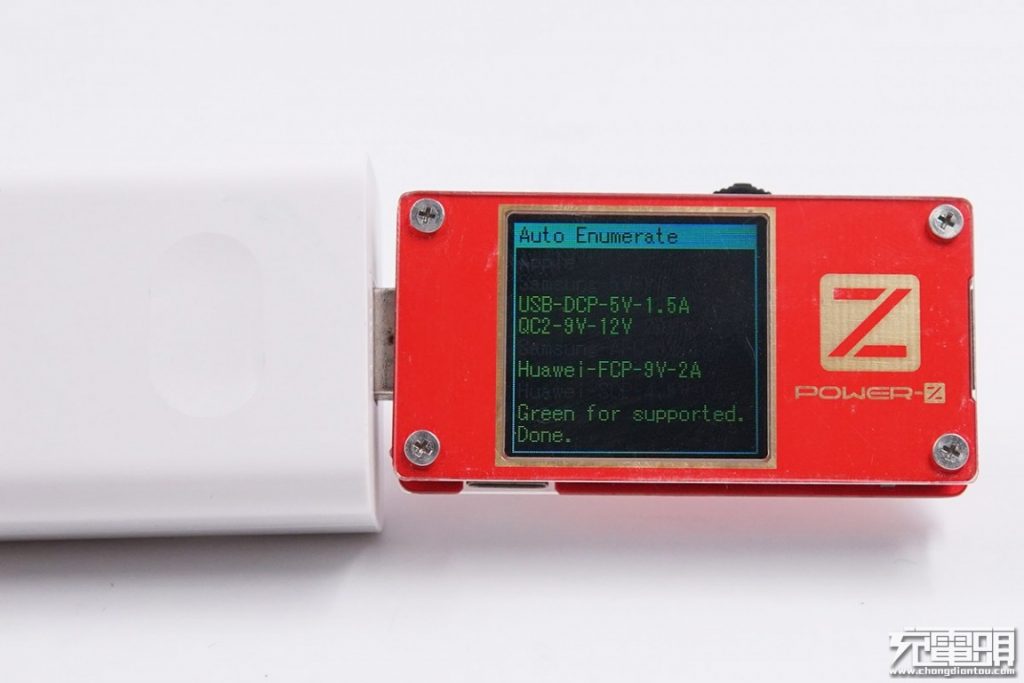
Using ChargerLAB Power-Z KT001 USB power tester, we know that it supports USB DCP, QC2.0 and FCP protocol.
III Teardown
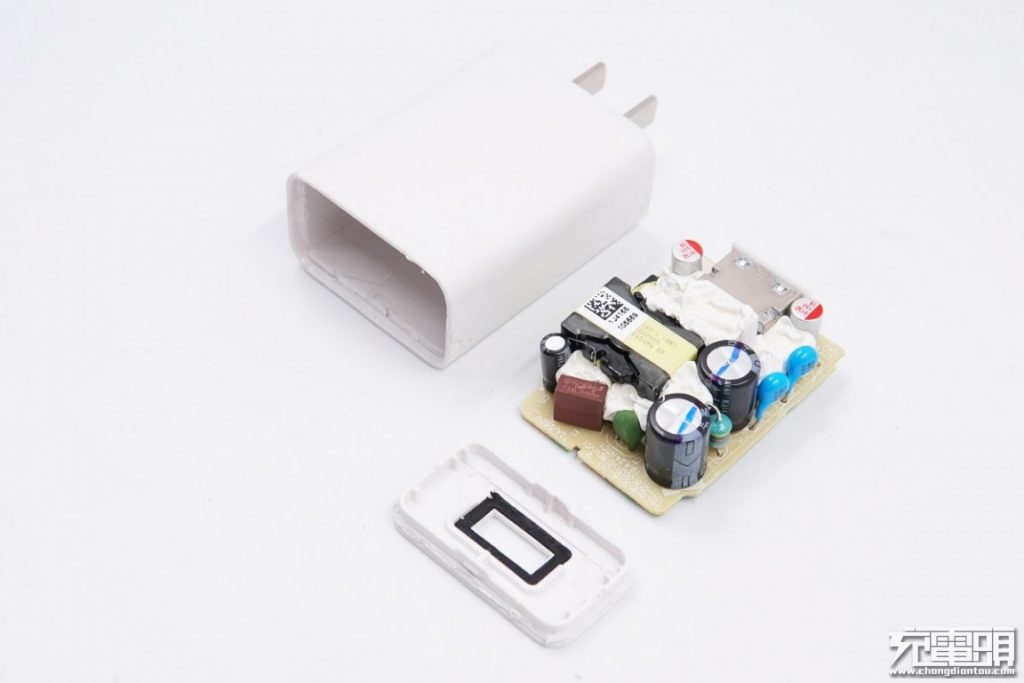
Pry open the output panel and we have the internal PCBA module.
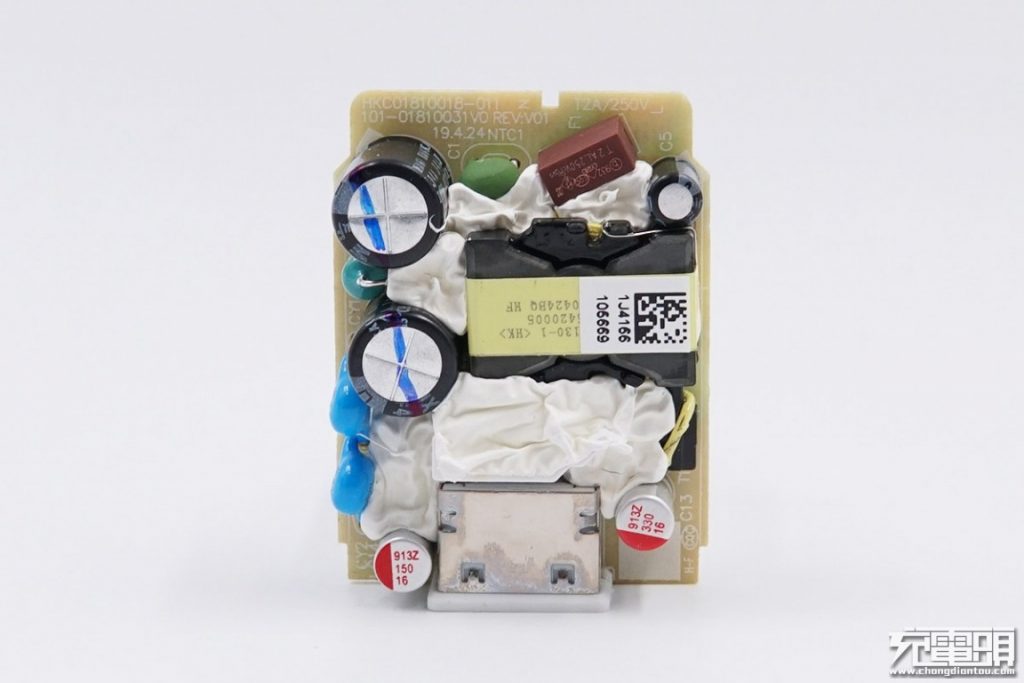
Front view of the PCB. The input is filtered by two electrolytic capacitors, while the output is filtered by two solid capacitors. The transformer has a sticker on it and a large amount of gel is used between the components.
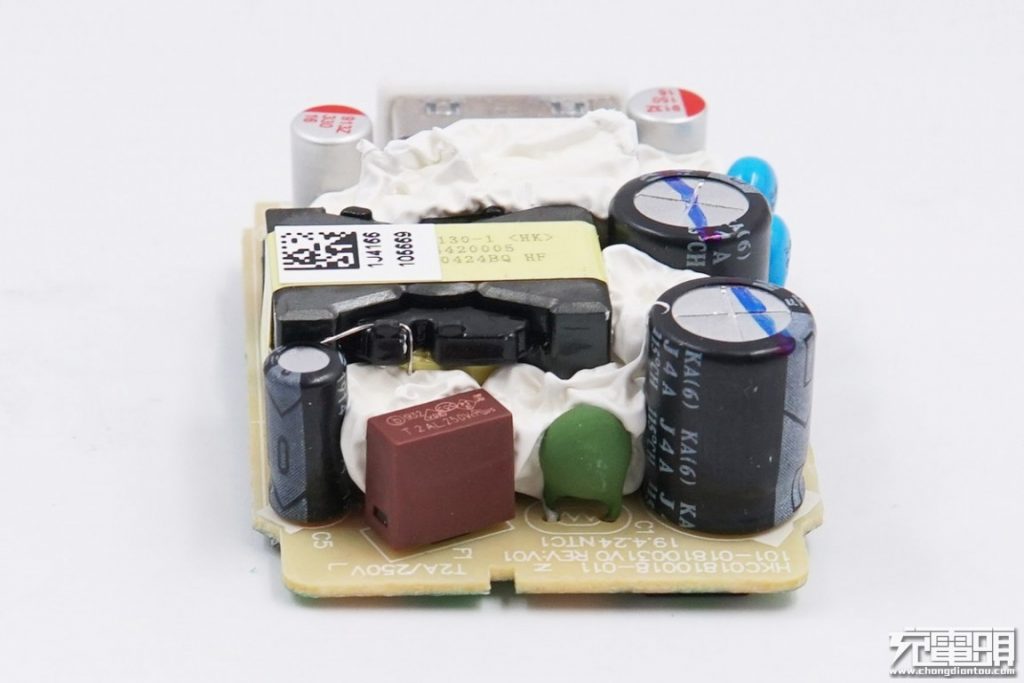
A delay fuse and a surge suppression resistor are used at the input end.
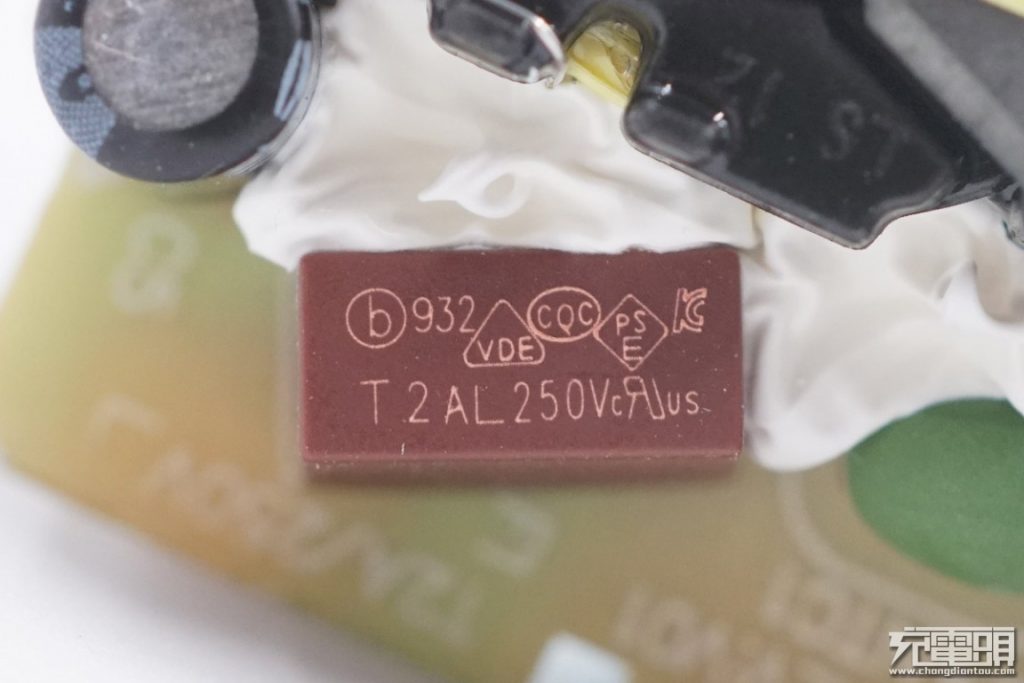
Time-delay fuse, size 2A 250V.
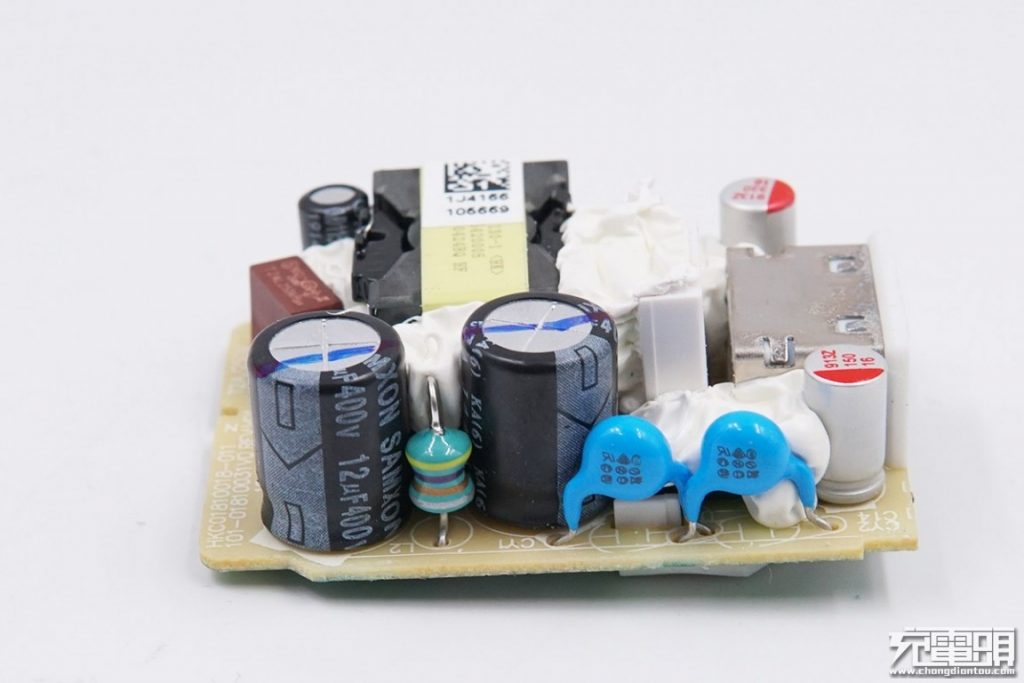
The input is filtered by two SAMXON electrolytic capacitors, all of which are 400V 12μF, and there is a color ring inductor between the two electrolytic capacitors. Two blue Y capacitors are arranged in series between the primary and secondary for output anti-interference.
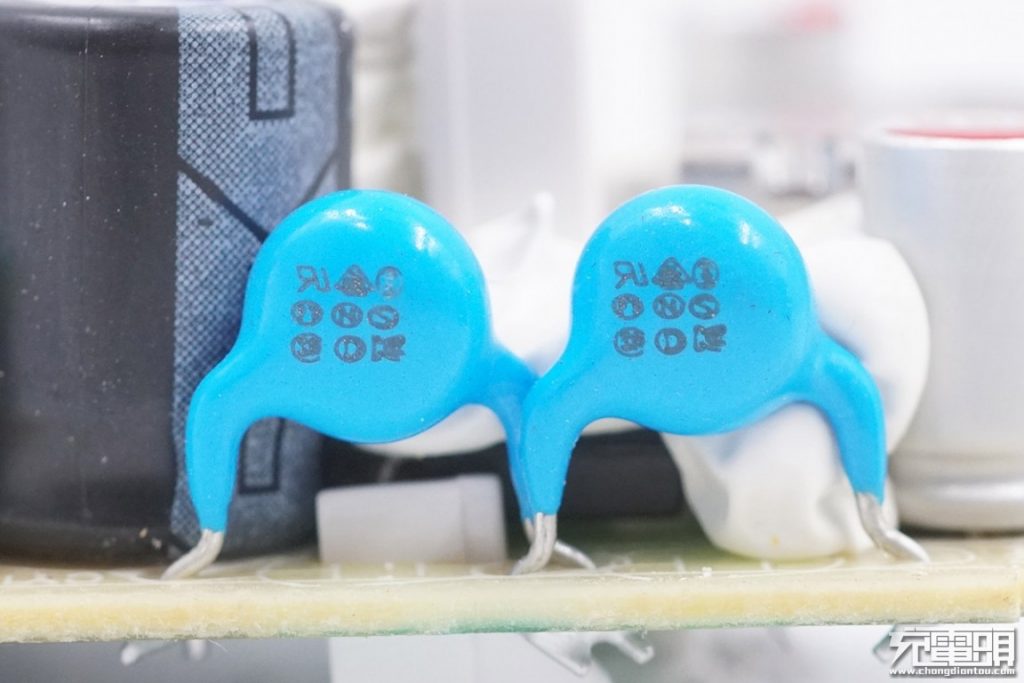
Close-up of the anti-interference Y capacitors.
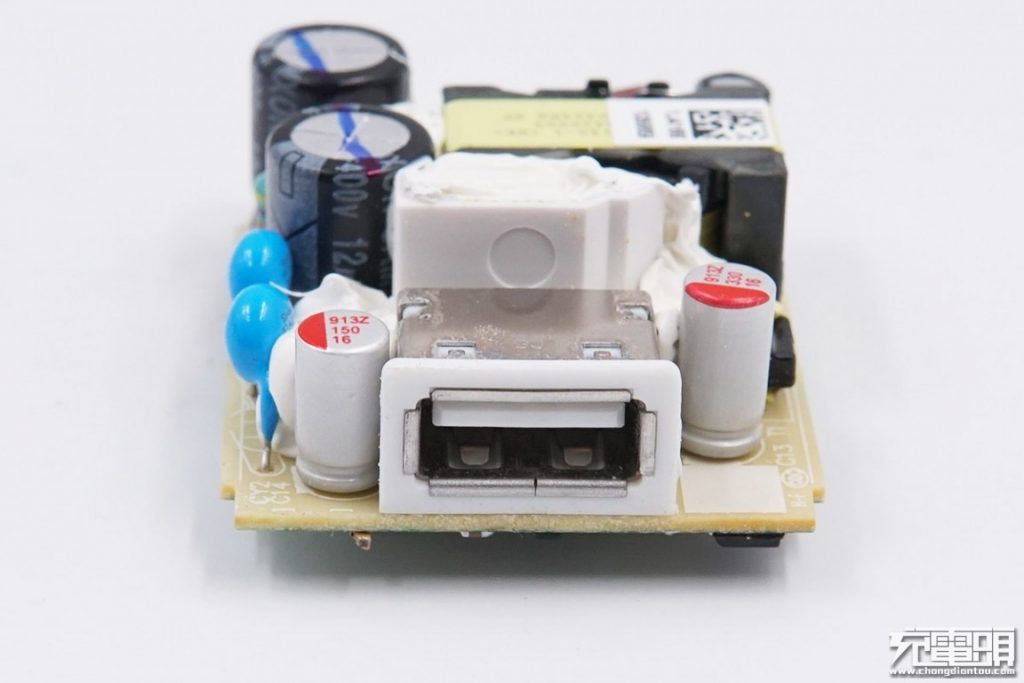
The USB-A port has an extra dust cover.
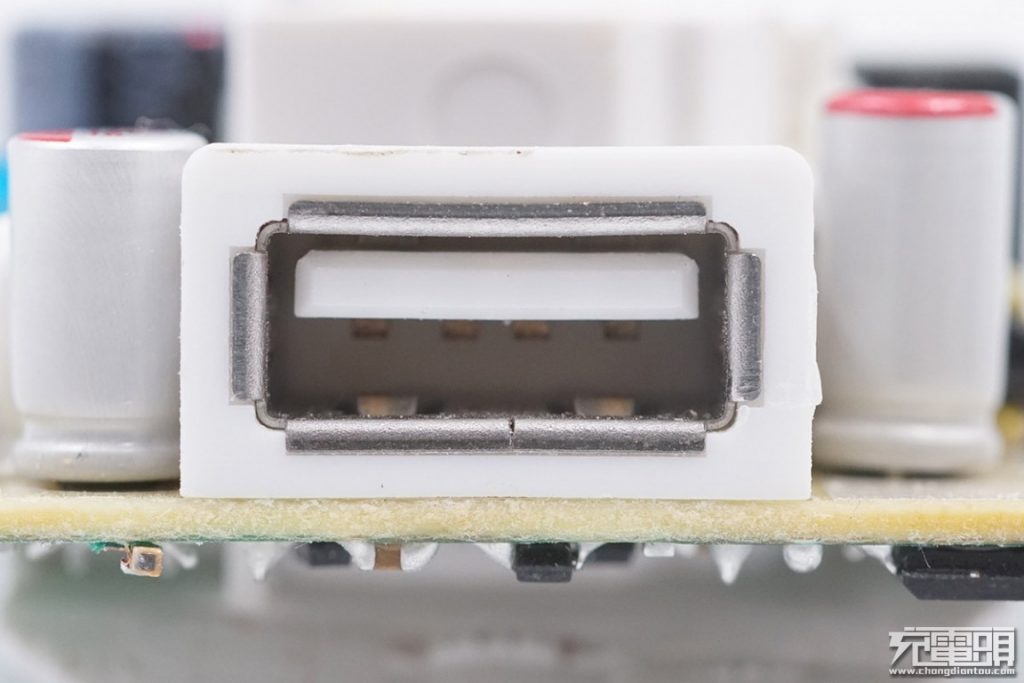
Close-up of the USB-A port.
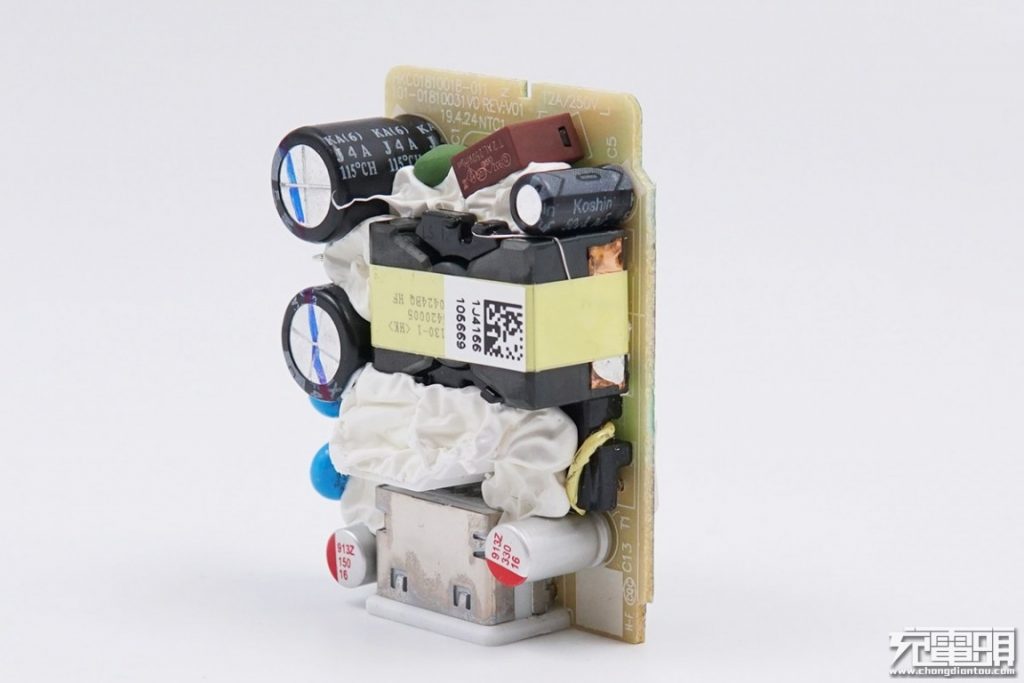
As can be seen from the side, the transformer core is grounded.
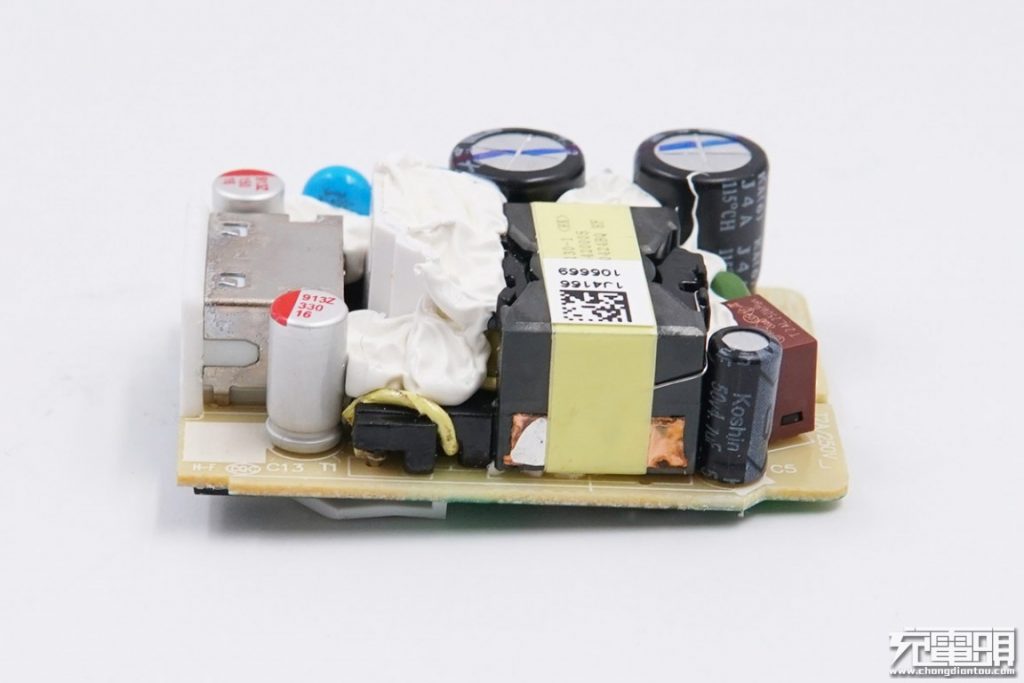
On the other side, we can see a capacitor that powers the PWM main control chip.
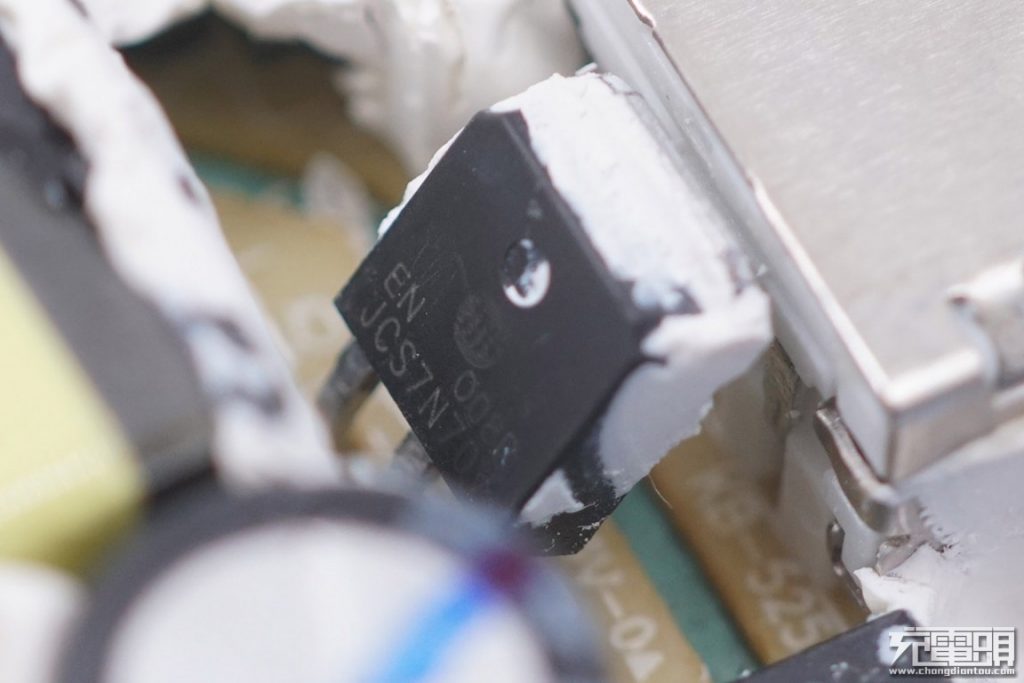
Remove the white gel between the transformer and the port, we can see a primary switching MOS tube from Jilin Sino-Microelectronics down below. It is covered by a large amount of gel for better heat dissipation.
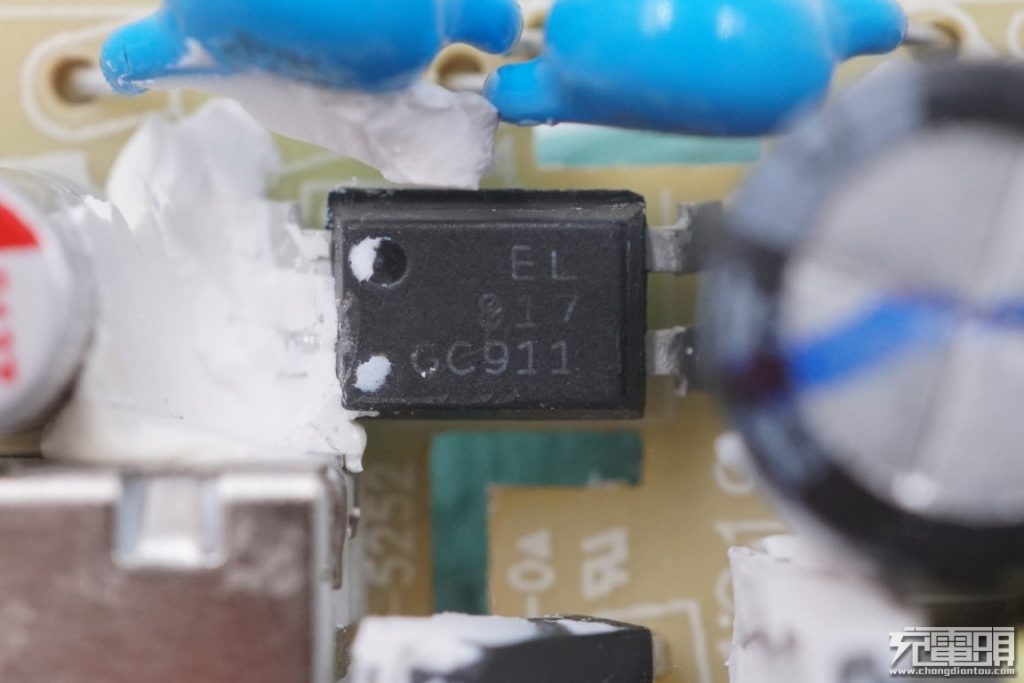
In addition, there is an optical optocoupler from Everlight Electronic which is arranged side by side with a Y capacitor.
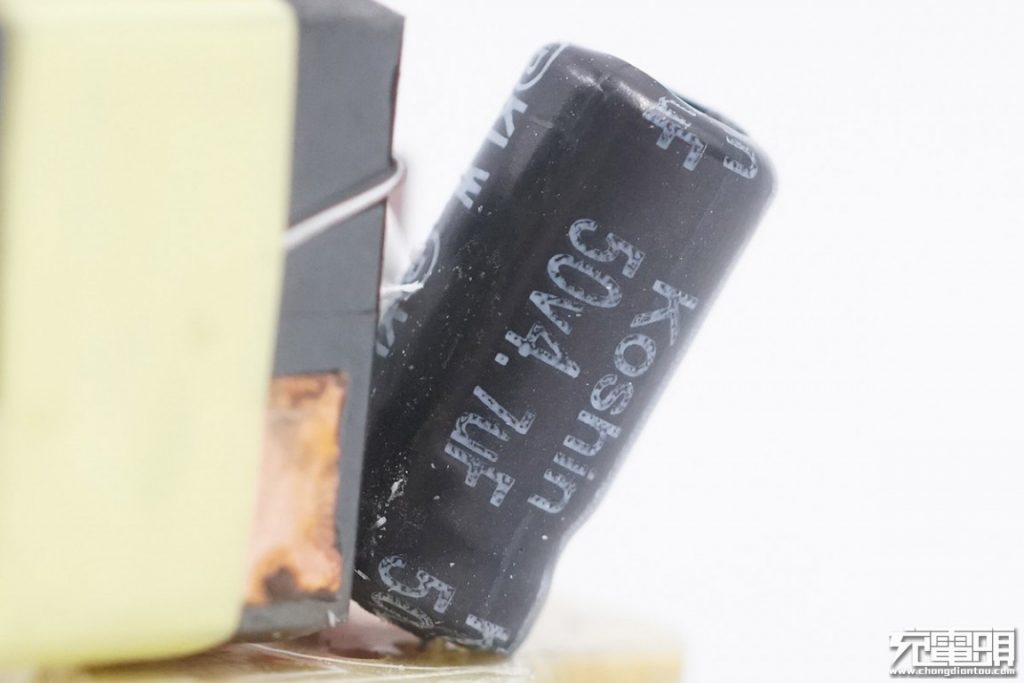
The Power supply capacitor for the PWM chip brand is from Koshin, 50V 4.7μF.
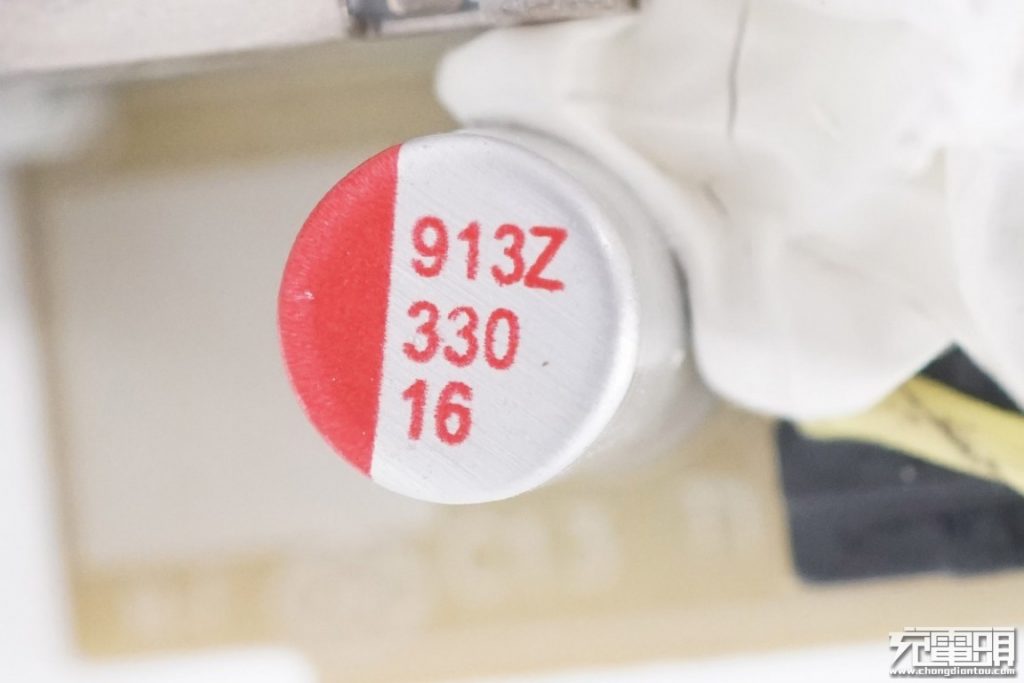
An output filter solid capacitor, 16V 330μF.
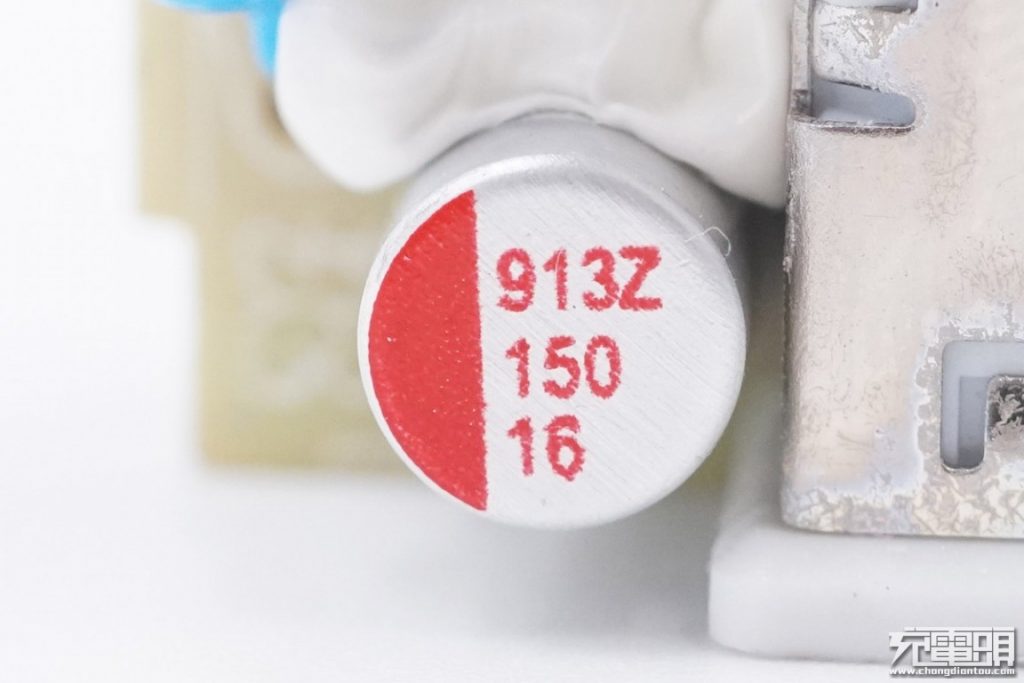
Another output filter solid capacitor, 16V 150μF.
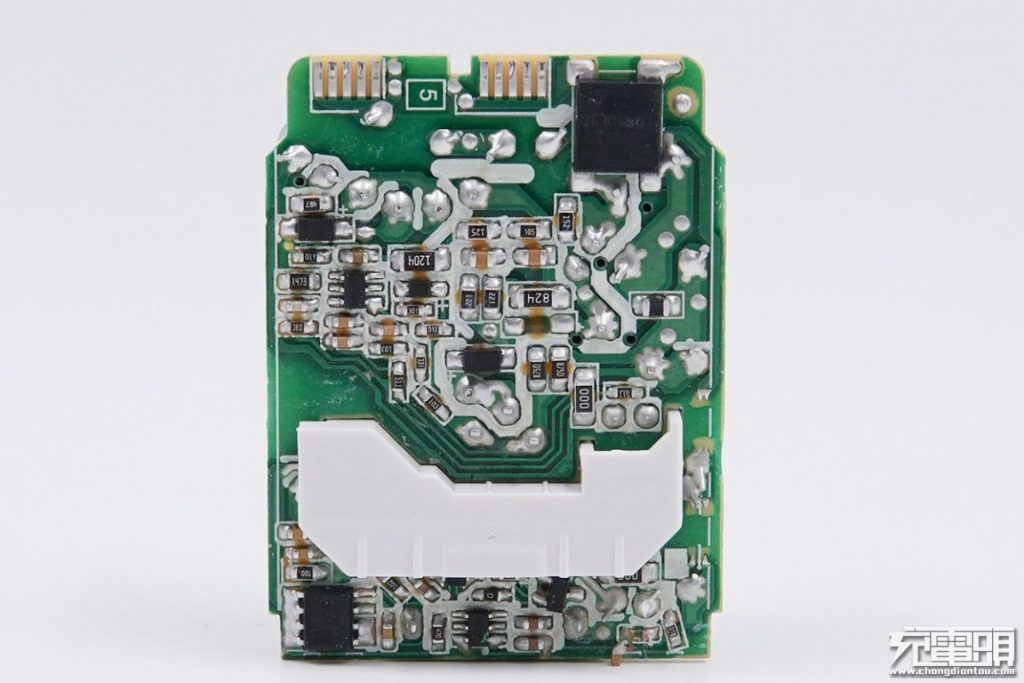
The back of the PCB at a glance。 There is an isolation gap between the primary side and the secondary side, with an isolation plate for added insulation.
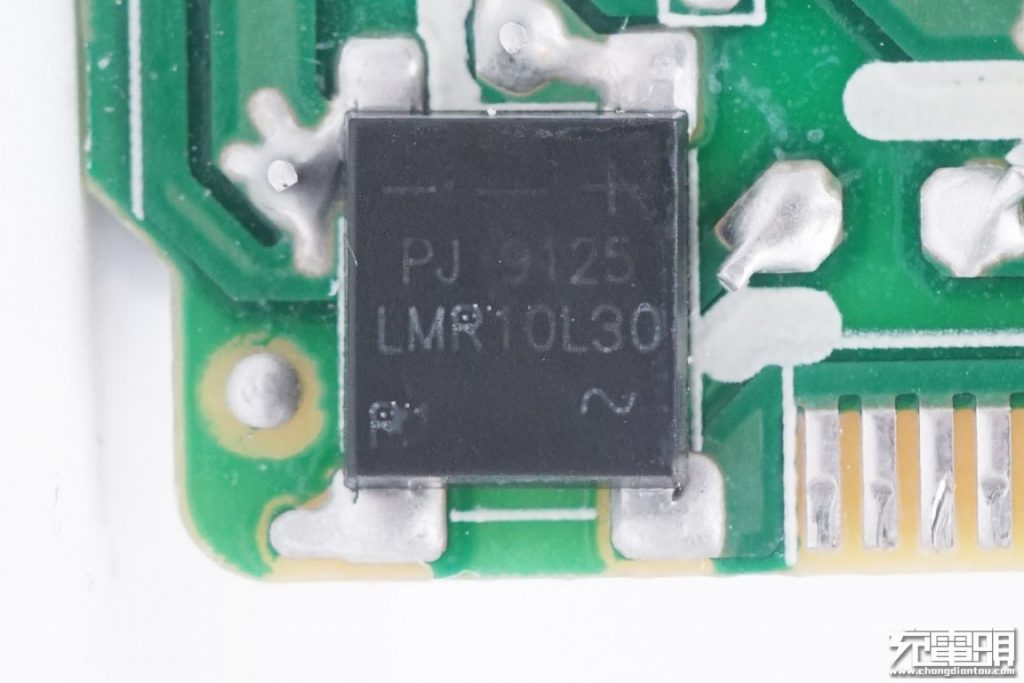
Input rectifier bridge.
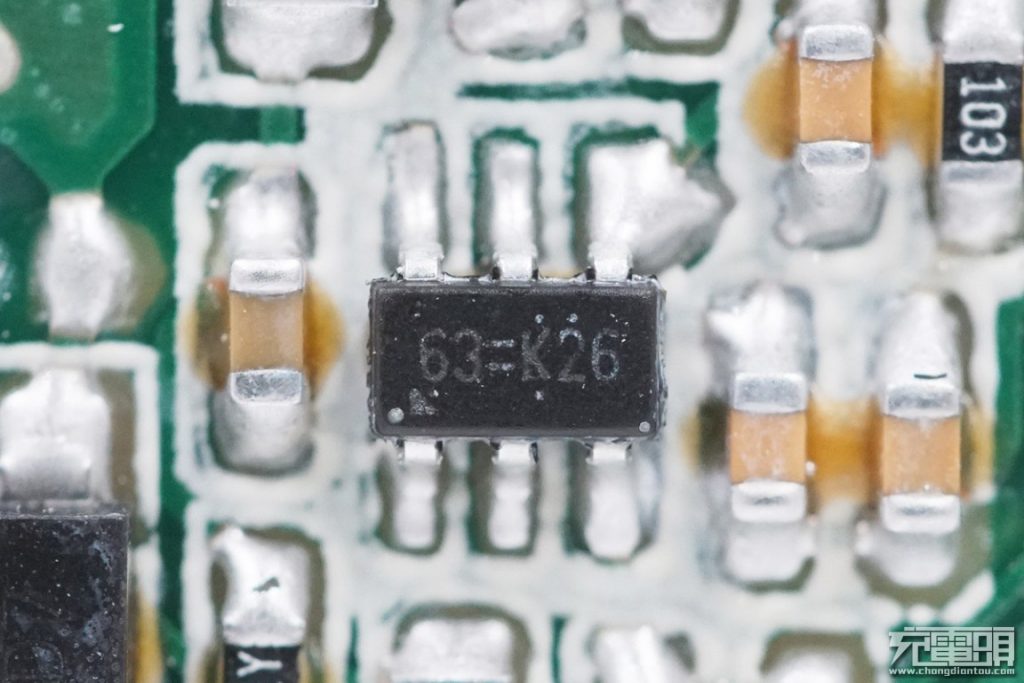
The IC with letter code 63=k26 is the PWM master chip from Richtek, its actual model is RT7753GCS, which is a CCM+QR hybrid high efficiency PWM chip.
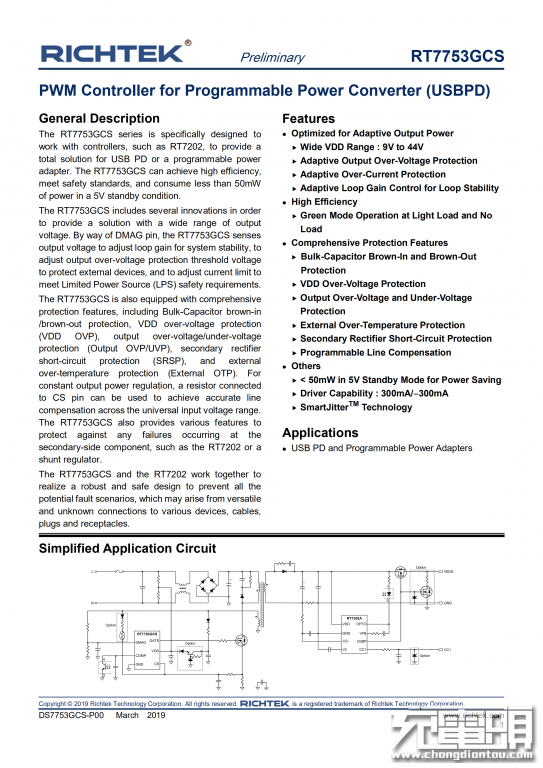
Detailed specifications of the Richtek RT7753GCS.
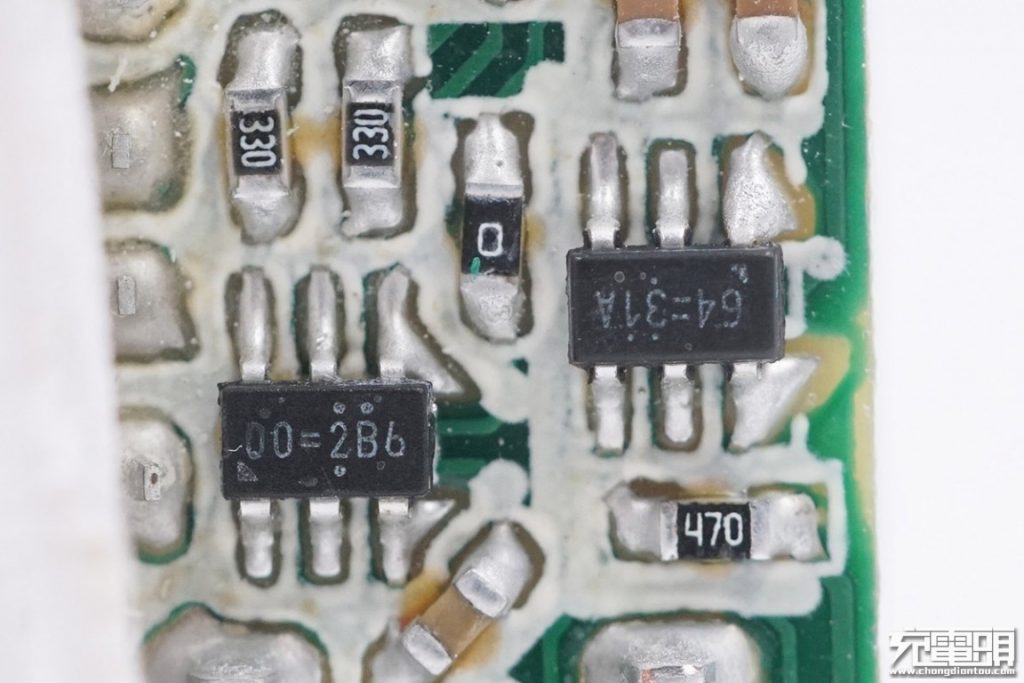
Near the output port, there are two six-pin chips with letter code 00=2B6 and 64=31A respectively, which are the synchronous identification controller and the protocol chip output from the USB-A interface, all from Richtek. The actual model of the synchronous rectifier chip is RT7220B, and the actual model of the protocol chip is RT7203A.
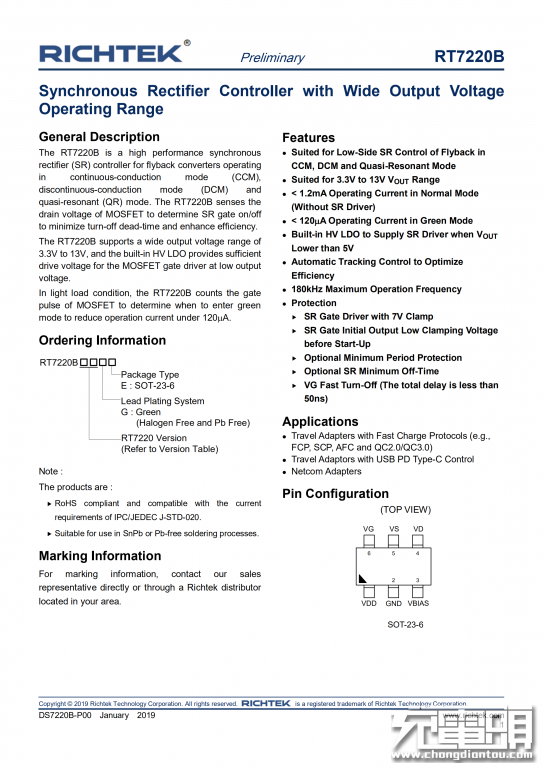
The RT7220B is a high performance Synchronous Rectifier (SR) controller for flyback converters operating in the Continuous Conduction Mode (CCM), the Discontinuous Conduction Mode (DCM) and the Quasi-Resonant (QR) mode.
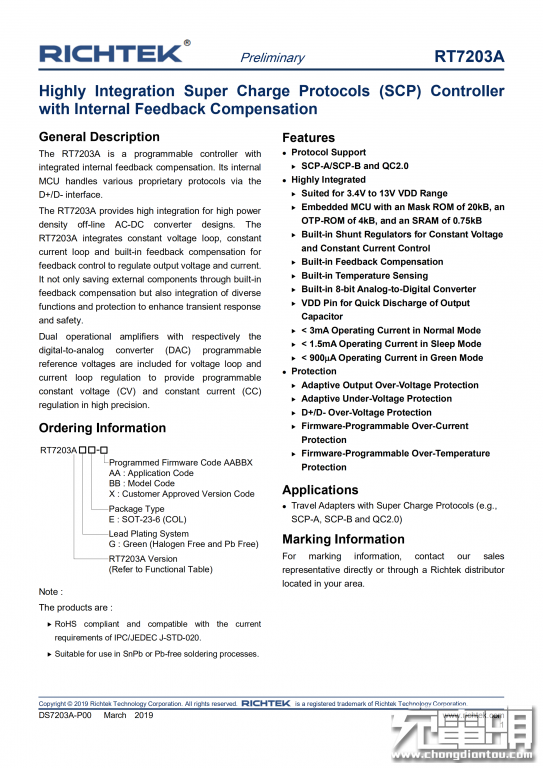
Detailed specifications of the Richtek RT7203A.
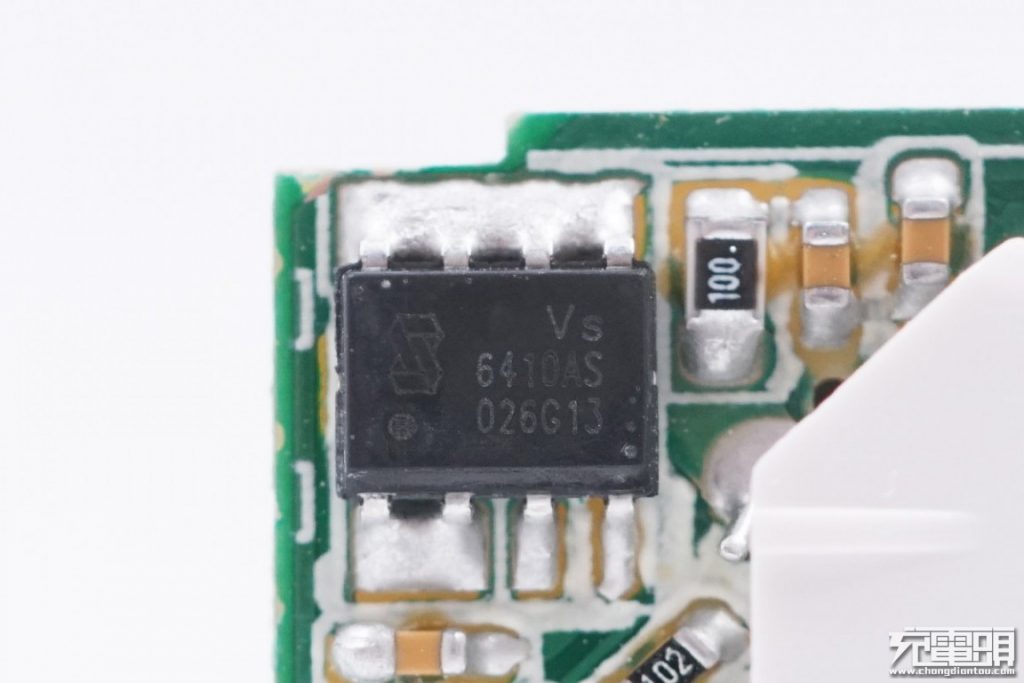
Secondary synchronous rectification MOS tube from Vanguard Semiconductor, model VS6410AS, SOP8 package.
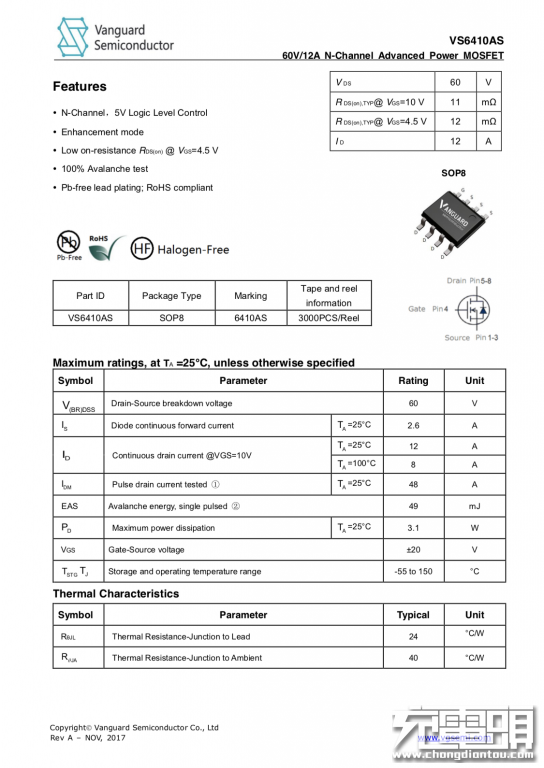
Detailed specifications of the Vanguard Semiconductor VS6410AS.
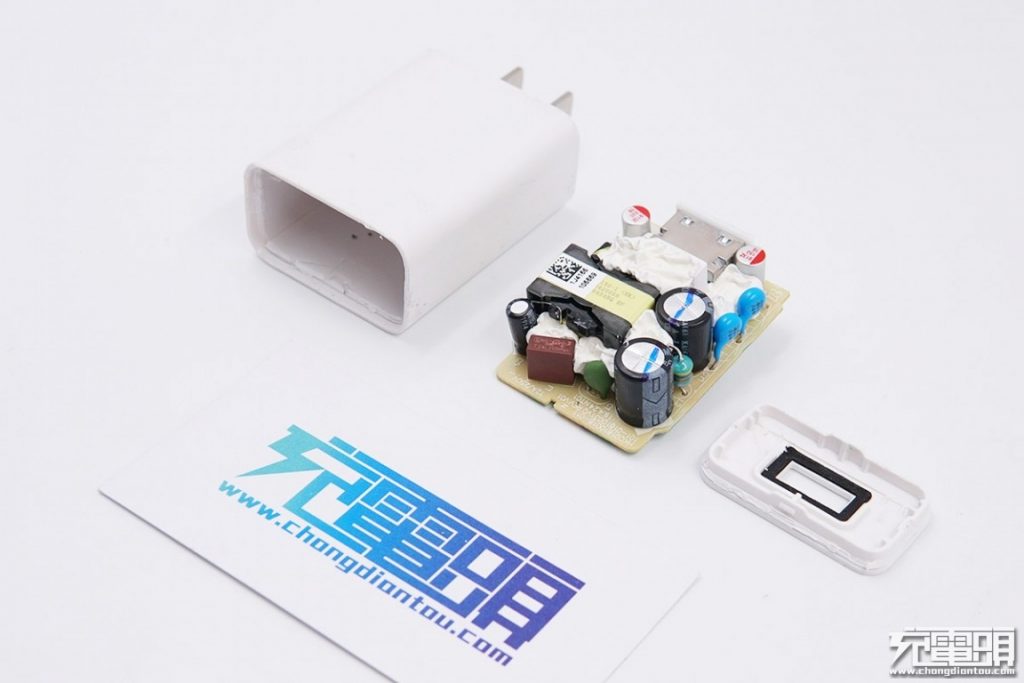
All the components.
IV Conclusion
The Huawei 20W FCP Charger (HW-100200C00) continues the high-quality components and high-standard layout of Huawei products.The use of charge pump technology doesn't require a significant change in the internal design or charging cable which help to bring the cost down. More importantly, it offers higher efficiency and produce less heat than the traditional high-voltage low-current solution.On the downside though, the charger does not support USB-PD, as it's a USB-A charger.
Pros:
High-quality components.
Nice build and neat layout.
Runs cool with high efficiency.
Cons:
Unfoldable prongs.
Does not support USB-PD.
Source: chongdiantou

